Home > Artist on Focus
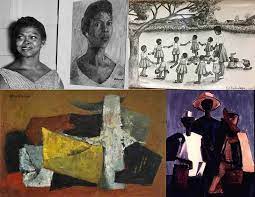
Clara Etso Ugbodaga-Ngu (1921-1996), art educator and artist, was the first Nigerian teacher on the staff of the art department of Nigerian College of Arts, Science & Technology, Zaria (NCAST). Ugbodaga-Ngu, who taught drawing at NCAST, was a teacher to the members of the Art Society—the group of Zaria students who pioneered of postcolonial modernism in Nigeria: Uche Okeke, Demas Nwoko, Bruce Onobrakpeya, Yusuf Grillo, Erhabor Emokpae et al. She was also the first Nigerian female artist to hold a solo art exhibition in London. From 1975, she served as state adviser for the Festival of Arts and Culture (FESTAC).
Clara Etso Ugbodaga was born in Kano in 1921. She developed an interest in art in her teens and, like Aina Onabolu, she taught art in mission schools from 1945 to 1950 before going to study art in England. After receiving a scholarship to study at the Chelsea School of Art, London, Ugbodaga-Ngu earned a National Diploma in Design (NDD) in 1954 and a year later, in 1955, she obtained an art teacher’s diploma from the Institute of Education, University of London. While in London, she met Professor Victor Anomah Ngu, the Cameroonian surgeon and scientist who later discovered Vanhivax, the HIV/AIDS Vaccine. They got married in 1960.
Ugbodaga-Ngu returned to Nigeria in 1955 and joined the staff of the Department of Fine Arts at NCAST. At NCAST and at the art department of Ahmadu Bello University, Zaria—which took over the art department of NCAST in 1961, Ugbodaga-Ngu was the only Nigerian lecturer till the early 1960s. Also she lectured at University of Ibadan in the 1960s, served as a part-time research fellow at the University of Ife, Ile-Ife in 1964 and subsequently, lectured at the University of Benin, Benin City.
Sometime in 1959, during the Zaria art department’s efforts to include local content in its curriculum, which followed Ben Enwonwu’s publicized criticism of its art program, Ugbodaga-Ngu invited T. A. Fasuyi to speak on traditional Nigerian art and later, Enwonwu to give a lecture on contemporary Nigerian art.
In 1958, Ugbodaga-Ngu opened an art studio in Nigeria and that same year, she had a solo exhibition at the Commonwealth Institute Art Gallery, London, which was the first solo art exhibition in London by a Nigerian female artist—while she and Afi Ekong (who, also in 1958, held a solo exhibition in Nigeria during the Festival of the Arts) were the first Nigerian female artists to hold solo art exhibitions. In 1963, Ugbodaga-Ngu held another solo exhibition at the Radcliffe Graduate Center, Boston, Massachusetts, USA.
Ugbodaga-Ngu was part of several group exhibitions including the 1960 Independence Exhibition at British Council in Lagos; ‘Contemporary Nigerian Art,’ at the Commonwealth Institute Art Gallery, London in 1968; FESTAC ’77 in Lagos, in 1977; ‘National Art Exhibition,’ at the National Theatre, Lagos, in 1980, and again in 1980, ‘Exhibition of Nigerian Contemporary Art,’ in Dakar, Senegal. In 1985, she was made a Fellow at the Asele Institute, Nimo. Her terracotta sculpture, Ona, and painting, The Turning Point, are in the permanent collection the National Gallery of Art, Lagos.
Clara Etso Ugbodaga-Ngu died in August, 1996 in Cameroon.
Sources:
https://artwa.africa/pioneers-of-modern-nigerian-art-biography-of-etso-clara-ugbodaga-ngu/
Postcolonial Modernism: Art and Decolonization in Twentieth-Century Nigeria by Chika Okeke-Agulu
Nigerian Artists: A Who’s Who & Bibliography compiled by Bernice M. Kelly
Post Header Image: Credit: Archive of Northwestern University, University of Birmingham
Clara Etso Ugbodaga-Ngu

Clara Etso Ugbodaga-Ngu (1921-1996), art educator and artist, was the first Nigerian teacher on the staff of the art department of Nigerian College of Arts, Science & Technology, Zaria (NCAST). Ugbodaga-Ngu, who taught drawing at NCAST, was a teacher to the members of the Art Society—the group of Zaria students who pioneered of postcolonial modernism in Nigeria: Uche Okeke, Demas Nwoko, Bruce Onobrakpeya, Yusuf Grillo, Erhabor Emokpae et al. She was also the first Nigerian female artist to hold a solo art exhibition in London. From 1975, she served as state adviser for the Festival of Arts and Culture (FESTAC).
Clara Etso Ugbodaga was born in Kano in 1921. She developed an interest in art in her teens and, like Aina Onabolu, she taught art in mission schools from 1945 to 1950 before going to study art in England. After receiving a scholarship to study at the Chelsea School of Art, London, Ugbodaga-Ngu earned a National Diploma in Design (NDD) in 1954 and a year later, in 1955, she obtained an art teacher’s diploma from the Institute of Education, University of London. While in London, she met Professor Victor Anomah Ngu, the Cameroonian surgeon and scientist who later discovered Vanhivax, the HIV/AIDS Vaccine. They got married in 1960.
Ugbodaga-Ngu returned to Nigeria in 1955 and joined the staff of the Department of Fine Arts at NCAST. At NCAST and at the art department of Ahmadu Bello University, Zaria—which took over the art department of NCAST in 1961, Ugbodaga-Ngu was the only Nigerian lecturer till the early 1960s. Also she lectured at University of Ibadan in the 1960s, served as a part-time research fellow at the University of Ife, Ile-Ife in 1964 and subsequently, lectured at the University of Benin, Benin City.
Sometime in 1959, during the Zaria art department’s efforts to include local content in its curriculum, which followed Ben Enwonwu’s publicized criticism of its art program, Ugbodaga-Ngu invited T. A. Fasuyi to speak on traditional Nigerian art and later, Enwonwu to give a lecture on contemporary Nigerian art.
In 1958, Ugbodaga-Ngu opened an art studio in Nigeria and that same year, she had a solo exhibition at the Commonwealth Institute Art Gallery, London, which was the first solo art exhibition in London by a Nigerian female artist—while she and Afi Ekong (who, also in 1958, held a solo exhibition in Nigeria during the Festival of the Arts) were the first Nigerian female artists to hold solo art exhibitions. In 1963, Ugbodaga-Ngu held another solo exhibition at the Radcliffe Graduate Center, Boston, Massachusetts, USA.
Ugbodaga-Ngu was part of several group exhibitions including the 1960 Independence Exhibition at British Council in Lagos; ‘Contemporary Nigerian Art,’ at the Commonwealth Institute Art Gallery, London in 1968; FESTAC ’77 in Lagos, in 1977; ‘National Art Exhibition,’ at the National Theatre, Lagos, in 1980, and again in 1980, ‘Exhibition of Nigerian Contemporary Art,’ in Dakar, Senegal. In 1985, she was made a Fellow at the Asele Institute, Nimo. Her terracotta sculpture, Ona, and painting, The Turning Point, are in the permanent collection the National Gallery of Art, Lagos.
Clara Etso Ugbodaga-Ngu died in August, 1996 in Cameroon.
Sources:
https://artwa.africa/pioneers-of-modern-nigerian-art-biography-of-etso-clara-ugbodaga-ngu/
Postcolonial Modernism: Art and Decolonization in Twentieth-Century Nigeria by Chika Okeke-Agulu
Nigerian Artists: A Who’s Who & Bibliography compiled by Bernice M. Kelly
Post Header Image: Credit: Archive of Northwestern University, University of Birmingham
Artist on Focus
Ato Arinze
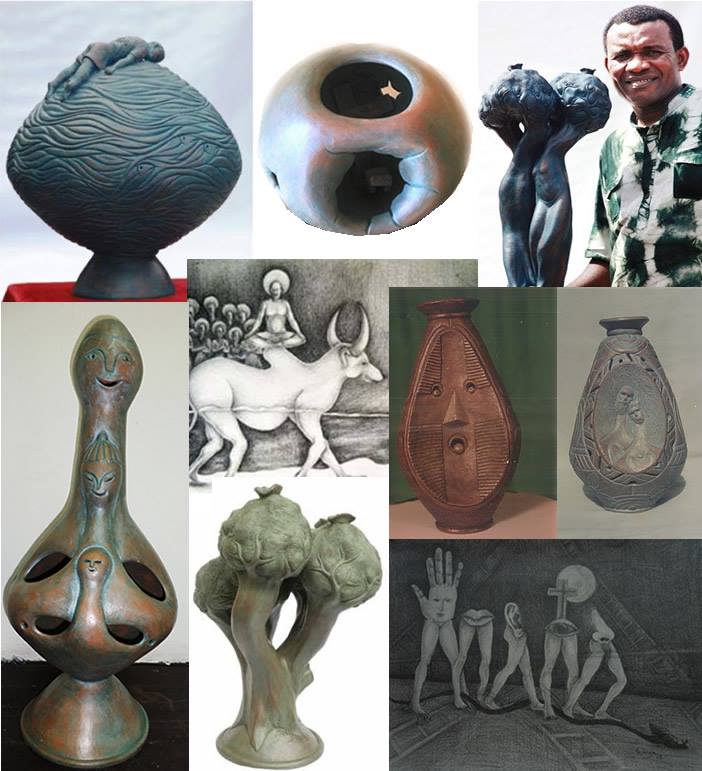
Ato Arinze had been an independent studio artist since 1991, practicing as a sculptor and a potter with special interest in ato's pictureportrait sculptures and statues. His grasp for forms attest to ...
[Continue reading]
El Anatsui
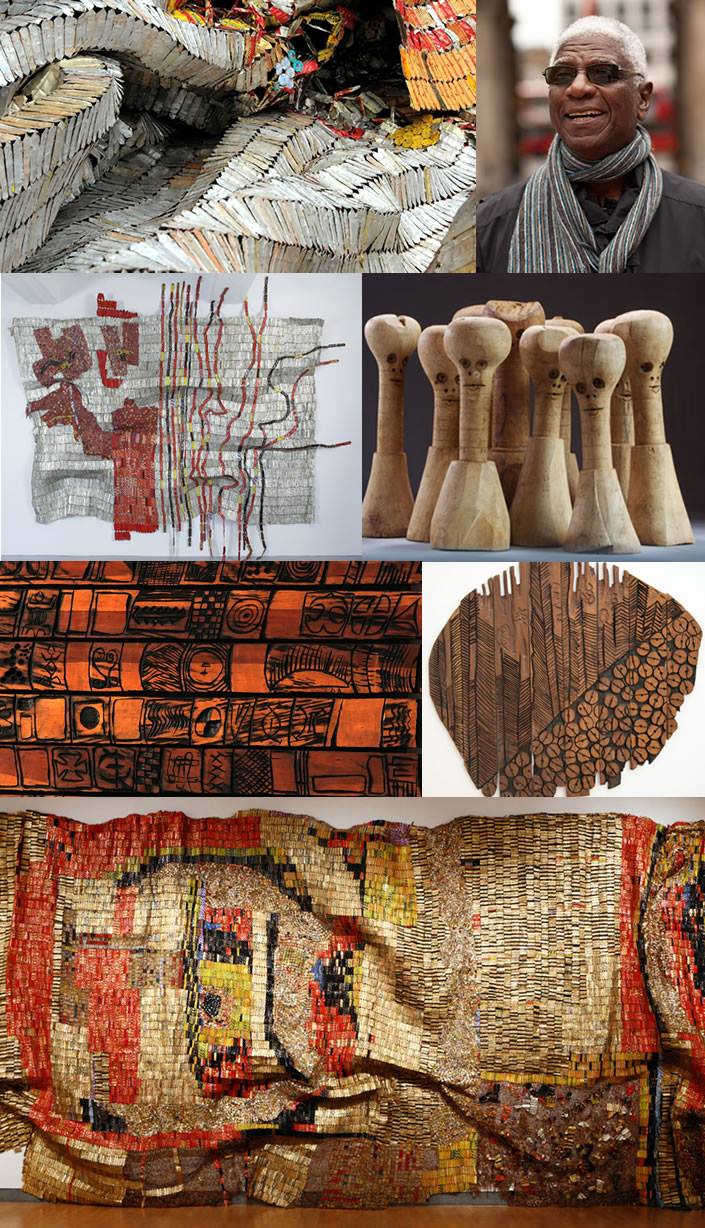
El Anatsui was born in Anyanko, Ghana in 1944. He is an internationally acclaimed artist who transforms simple materials into complex assemblages that create distinctive visual impact. Many of Anatsui...
[Continue reading]
Nnenna Okore
Born in Australia, 1975 and raised in Nigeria, Nnenna Okore has received international acclaim for her richly-textured sculptural forms and installations. She reconfigures organic or discarded materia...
[Continue reading]
Tola Wewe
Tola Wewe, born in Okitipupa, Ondo State, Nigeria in 1959, trained and graduated with a degree in Fine Art from University of Ife in 1983. He then went on to obtain a Masters degree in African Visual ...
[Continue reading]
George Edozie
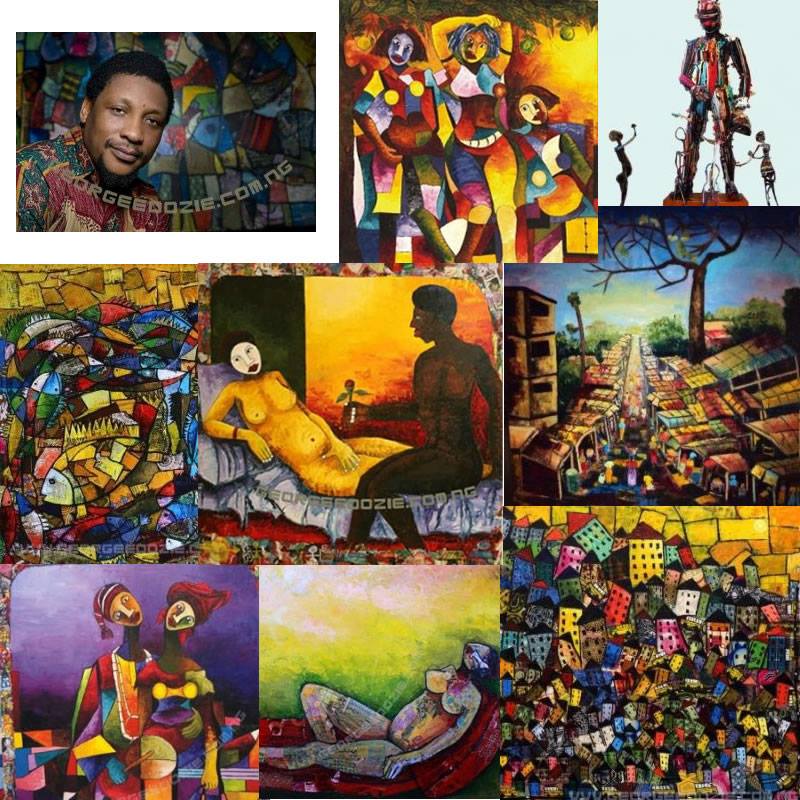
George Edozie was born on the 11th of May 1972 in Enugu state Nigeria. He studied Fine and Applied Arts at the University of Benin where he majored in Painting. BA (Hons Fine and Applied Arts) graduat...
[Continue reading]
Dr Moyo Okediji
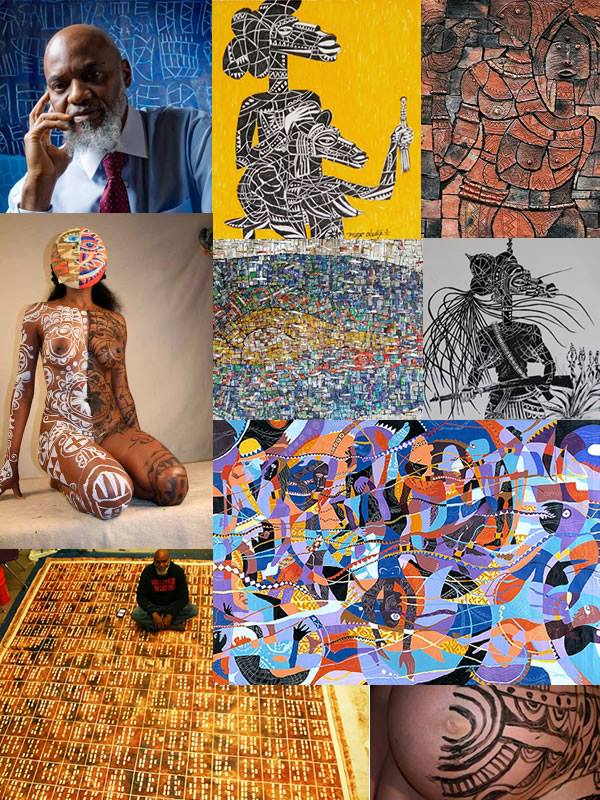
Moyo Okediji is an art historian, artist and curator whose works contains a number of icons and signifiers of the deep aspects of Yoruba culture. He was part of Ona, an art movement at Obafemi Awolowo...
[Continue reading]
Dr Kunla Filani
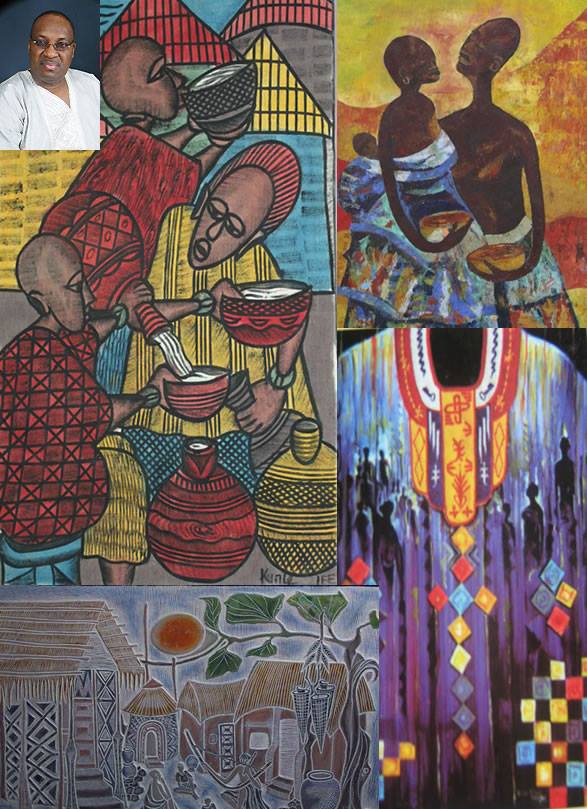
Kunle Filani (born 8 September 1957) is a Nigerian educator and artist. His works are closely identified with the school of thought named Onaism; Onaism is an art movement that is based on the fusion ...
[Continue reading]
Chinwe Chukwuogo-Roy (1952-2012)
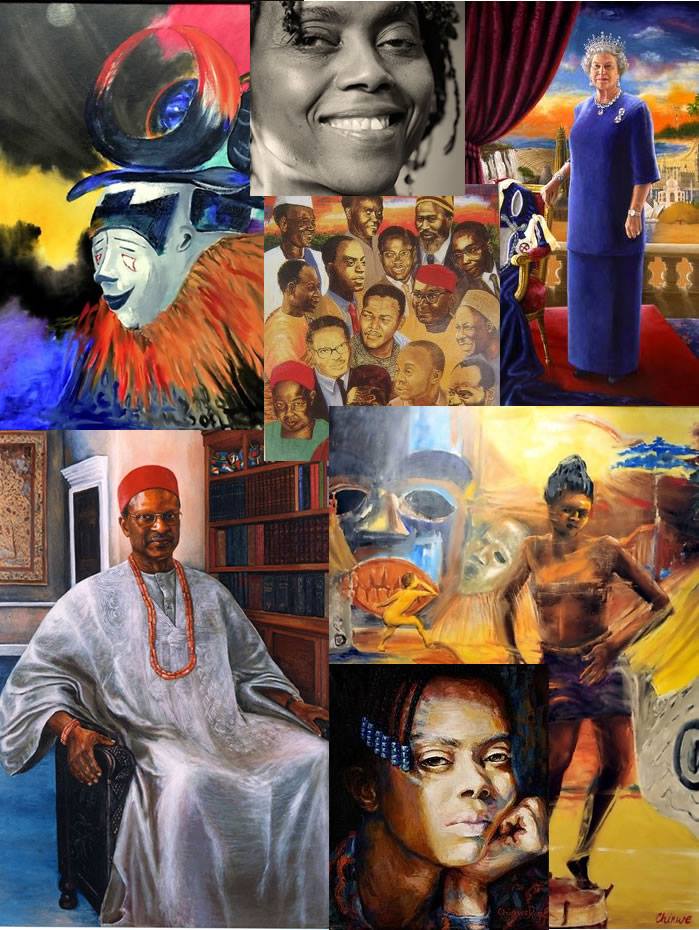
Chinwe Chukwuogo-Roy (2 May 1952−17 December 2012) creates a lasting impression on canvas as well as on those who meet her. For the fortunate ones who sit for her, her charm pervades and the intensi...
[Continue reading]
[First Page] [Prev] Page 5 of 8 [Next] [Last Page]